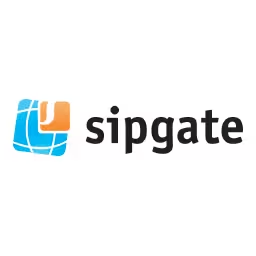dina Amin

dina Amin is a designer from Cairo, Egypt. She completed her B.A. (Hons) in Industrial Design in Malaysia. Although trained as a Product Designer, dina loves to explore the intersections between various disciplines.
In 2016, dina started a side project called 'Tinker Friday' on Instagram, where she combined her passion for product design and stop motion with her views on consumerism. In this stop motion series, dina shows people what's inside the countless things they throw away, in unusual ways. dina continues to tinker, making new items out of old ones, constantly telling stories and showing people things in a completely different way.
After discovering her love for stop motion, dina also founded "Tinker Studio", where she produces stop motion videos for diverse clients and companies around the world.
Talk: A Tinker Story
In this talk dina will share her tinker story, how it all started and why she continues to tinker. She will share what she’s learnt so far and the biggest mistakes she’s done. And hopefully show you a side of Egypt you’ve never seen before.
Transcription
[Digital music]
[Applause]
dina Amin: Thank you. Hello, everyone. Before I start, I have two disclaimers. Who has never seen an Egyptian before or met Egyptian people? Show your hands. Okay. I am probably the shortest Egyptian you’ll ever meet. Okay? [Laughter]
Audience: [Laughter]
dina: Egyptians aren’t really that short because people, when they first meet me, they doubt if Egyptians really built the pyramids or not. They did. [Laughter]
Audience: [Laughter]
dina: The second disclaimer: My name is dina Amin, and not Dina Amin. Okay? I really, really, really hate capital Ds - really hate capital Ds. It’s just something about its proportion that--I don’t know--I hate it.
I had so many people tell me, “You’re nuts because the D is such a fancy letter.” Probably typographers and calligraphers will tell me this, and I tell them, “No, because the D is a really mean letter,” because, when I see it written next to the little letters, this is what I actually see. [Laughter]
Audience: [Laughter]
dina: I see a mean big letter just shooing away all the little ones. Then, some other people would tell me, “No, but the D is a happy letter,” because this is how we write the emoji the happy face, it’s a happy letter. Well, can you see it coming?
Audience: [Laughter]
dina: Not going to happen. [Laughter] I really, really hate capital Ds. Please, also, if you’re a typographer or something, please add lower case fonts to your typography, to the fonts, to the types.
This is something that I found myself occasionally doing. I would look at things and imagine them coming to life. But, for the last two years, this is all that I’ve been doing. I accidentally started this project on Instagram where I take products apart and then I show people what’s inside them. In this project, I combined my love for product design and my found love for stop motion and my views on consumerism.
It’s really easier to show you than explain it, so I will do it now. My goal today is to show you things that you’ve never seen before. If you follow me, then you probably did. But, if not, you’ll see.
This is a mobile pouch. It was really an accessory item some years ago. Now, they still exist, but they are thrown away somewhere completely obsolete. This, I’m sure you’ve seen someday, but--
[Tinkering music]
[Applause]
dina: Thank you. Have you seen a mobile pouch transform into a superhero before? I hope not. [Laughter]
When I first started, I’m not an animator. I really didn’t study animation. I didn’t even have a camera or anything. I would take my phone to the table, and I would sit there. I only knew the basic idea of stop motion is that you take many photos and, in each photo, you change the position or transform your object.
This is all you do. You take a photo, change your object, take a photo, and change your object. I would sit there and do this for hours and hours. All I really wanted to do is get all my ideas in my head into the real world.
How did I really start? Of course, I didn’t wake up one day and decide, “Oh, I’m going to just take products apart and transform them into other things.” It didn’t happen that way, of course.
I studied product design in Malaysia, and I love product design. I loved how we can create objects that people can interact with. They can solve a problem. But, I also hated a big part of product design where most of the things we create actually end up being thrown away.
This is a picture from a scrap market in Egypt. It’s in Imbabah in Cairo. There you’ll see so, so many things that people throw away, literally throw away. Most of, if not all of, the products there are actually collected from garbage bins.
When you live in a country like Egypt, you see the true image of product design because most of the products that we receive in Egypt are low-quality products that actually barely work for a week and then they end up being thrown away. But, regardless, I graduated from product design, and I worked in product design along with many, many, many, so many different jobs until I reached the point where I really couldn’t recognize what I liked or disliked anymore. And, I would make really weird decisions that didn’t make any sense to me. I would just accept whatever is considered an opportunity in Egypt, and I would really settle.
Then, one day I was thinking, “This is really weird. Five years ago, I would have never accepted this. What happened?” Then I was thinking, “Okay. It’s okay. I’m just going to continue exploring. I’ll try so many different jobs until one day I’ll find the thing that I love to do the most.”
Years passed, [laughter] and I didn’t find it, so I said again, like, “Okay. What if I did not find the thing I love the most?” This is not coming out of me being a negative person, but what if I didn’t find it because it’s not there?
Still not being negative, what if I didn’t find it because I’m meant to create it? It’s still not there, of course. I got really excited about this. It’s like, okay, I’m going to start something. I’m going to find something that I really like to do, and I’m going to do it.
Then I realized this is a really bad step because the problem is I don’t know what I like. [Laughter] I was thinking, okay, this thing has to be a career, of course. It has to be financially rewarding or at least pay the bills. It has to maybe solve a problem or at least people need it. It has to fit the market somehow. Maybe society accepts it, and so on.
Then I realized this is a lot of criteria to set, so I decided to just scrap all this and just pick one thing, and I’ll just base it all on that. I picked that whatever I’m going to do would be something that I kind of like doing. Not even love, but I kind of like to do. When I did that, it became really easy.
I was sitting there. We were moving houses, and I was sitting in our old apartment in my now empty bedroom. I see this one box that wasn’t allowed in the new house. It was filled with all the broken junk products that I’ve been collecting over the years from friends and family, from scrap markets I go to.
I look at it, and I’m like, “I actually like taking products apart. If I spend my whole life doing one thing, it would be taking products apart.” [Laughter]
I didn’t care if I’m going to make a career out of it or not. I was like, I have one rule. I like it, so I’m going to do it. I won’t care if people will be happy to see me doing this or not. Of course, my parents weren’t very happy [laughter] when I told them I’m quitting my job, and I’m going to sit in my room and just take products apart all day.
Audience: [Laughter]
dina: They were ecstatic. [Laughter] Yeah.
Audience: [Laughter]
dina: My mom was like, “So, you’re not going to work in a company where there are people there; maybe you meet a potential husband?” [Laughter]
Audience: [Laughter]
dina: I’m like, “No, I’m not going to do that.” It’s been stressful. [Laughter] In Egypt, we have this saying. They say, like, when a girl -- because there is a timeline for a girl in Egypt, or a woman in Egypt, and the priority is you have to get married. This is your top one on the list that you need to check.
We have this thing when a girl reaches 30, they say, “Oh, you’ve missed the train.” My mom would tell me, like, “dina, you’re not even at the station.” [Laughter]
Audience: [Laughter]
dina: I’m okay. You know, missing an imaginary train is not one of the criteria I base this on. [Laughter]
Audience: [Laughter]
dina: I thought, okay, I’m going to do this, and I was leaving my last job. In Egypt, the weekend starts on Friday, so I decided, okay, I’m going to be committed to this every Friday. I’m going to pick one item, and then I’m going to take it apart. I don’t know what I’m going to do, but I’m going to take it apart. Since I love to document my projects, I’m going to document this somehow.
I am really scared of the Internet, or at least I really was. I’ve always liked blogging, but I didn’t really share my work. I would write it, but then hide it. I thought, I’ve never personally used Instagram, and I wanted to take pictures and photos of all the products, so I thought, this is the perfect space because I know Instagram, people take selfies on Instagram or, like, food photos. They won’t really -- people won’t really want to see junk photos of broken products and stuff. I was like, this is a comfortable area for me, so I’m going to do this.
I started doing this. At first, I would just post photos of the products, still images of the whole product and the pieces of it, and some people did follow along. I’m like, okay.
Then, one day, I take this shaver. I pick this shaver. Then I’m like, this is incredible, the way it all comes together. It’s like an amazing puzzle, and just one photo doesn’t really show how amazing this is.
I remembered this thing called stop motion, so I’m going to try it out. I think you take a couple of photos, and I took, like, 500 photos, and I made this one minute video. Of course, I tried to post it on Instagram. Back then, Instagram didn’t allow long videos. So, I’m like, okay.
I Google, and then I find this thing called frame rate, which I had no idea what it was. In stop motion, frame rate is the number of frames per second. In stop motion, it’s either done on 24 frames per second or 12 frames per second, which means, if I want to animate my hand going from here to here and I’m using 24 frames per second, I need to take 24 photos of my hand going down.
I’m like, okay, this is interesting. There is a lot to learn about stop motion than I really know. This is nice.
This was my first video that I made. I was so impressed with myself. I’m like, wow, this is incredible, and I wasn’t even using a stop motion app or anything. I was just using an application that you make slideshows with.
Then I decided, okay, I’m going to continue doing this. Week after week, I would challenge myself to learn more about stop motion. Then, I started seeing characters like this one.
[Video game sound effects]
[Applause]
dina: Thank you.
[Applause]
dina: I have done, like, maybe 38 videos or something. I’ve been doing this for, like, the past two years. This is the latest object that I took apart, and also one of the earliest objects I took apart as a kid. I remember that would always, always pull the eyeballs out of my dolls because I really, really wanted to know how they closed their eyes like this. I also remember my mom shouting, “dina, why don’t you ever play like other girls.” [Laughter]
Audience: [Laughter]
dina: When she saw me as an adult doing this, she just snapped. [Laughter] “You’ll never change!” This is the video.
[“Evening of Chaos,” by Kevin MacLeod]
[Applause]
dina: Thank you. You can see most of the videos are on Instagram. And, if you want to see behind the scenes secrete posts, they are on my Patreon.
It was very different taking this apart as an adult than as a child. At first, when I first held the doll head, I immediately noticed how the hair is not weaved on all the head, but only on the sides, and I really wanted to share that because, as a kid, I always thought that, “Oh, my God. They did not finish making my doll.” I didn’t think, “Oh, they were trying to make a cheaper doll by only using just a few hairs.” [Laughter] Now I know why my dolls were always bald. Of course, after pulling their eyeballs out, this is all I got was bald dolls.
I made so many of these. Every time I posted a video, someone would tell me, “Oh, my God. We never actually knew that there were so many parts inside.” They actually don’t know what’s inside of the products that even we use on a daily basis. So, I continued to show people what’s inside the things that they throw away.
Then I also recognized, okay, so maybe it’s actually easier for us to throw away things when we treat them as one whole object. It’s easier to throw away one thing and not 100.
I continued to do this, but I wanted to make it as a project. Since I’m really bad at naming things, I asked the people who follow me, “What should I call this, what I’m doing?” Someone said, “Explosive Fridays,” since I make things explode. But, thinking where I come from, [laughter] I really wanted to stay away from that word.
Audience: [Laughter]
dina: Someone else said, “Tinker Project,” and I really liked the word “tinker,” so I named it Tinker Fridays for consistency reasons.
This is another one. This is a mechanical plugin timer. How many pieces do you think this is made of? Should out numbers. A hundred - no. More. [Laughter] Not 1,000. It’s 156, and this is what’s really inside - maybe, not really.
[Clicking]
dina: Before making this one, I saw the video of Walt Disney explaining one of the machines they made, and they used this for Snow White, and they made this multiplane camera where they had lots of glass surfaces, and they would animate each layer separately. It also gave depth to the whole cartoons.
But, I didn’t have a multiplane camera. I just had a piece of glass in our living room table, and I took that. I glued it, and some wooden rods. Put it in some Pringle cans and some pebbles, and it worked just fine. I did the video, finished, took it apart, put it back in the table, and my mom never knew anything. [Laughter]
Audience: [Laughter]
dina: She’s worried every time I take something, and then I go to my home studio. She’s like, “What are you ruining now?” I’m like, “Nothing.”
It was a lot of fun making these videos. It still is. Another fun part is sharing all this, and I would do this thing where I would share my characters, and I would ask my followers to name them. They would come up with really funny, creative names. This one is Cassetta Von Dancinparts. This one is Fast and Furious. They’re from a Play Station controller, and they were gaming.
This one is Pearl. There’s a knitting stitch called pearl, and she is knitting her eyes out. [Laughter]
Audience: [Laughter]
dina: Of course, my parents would ask me. I would show them this and, along the years, they would accept it somehow. They would laugh, and they were like, “Oh, okay. It’s funny. But, then what? This is what you’ve learned?”
I studied product design in Malaysia, and I’m an Egyptian girl who left her country and went abroad to study something, and this is a big deal. Now, all of a sudden, I’m not even doing product design, so they were like, “Then what? Is this what you learned in school?” I’m like, “Actually, people should all learn this,” so last year I got an opportunity to teach at the German university in Cairo and, of course, I had my students taking apart products, and they learned a lot, hopefully. [Laughter] It was really nice to see one of the students actually wrote that she never knew that there were so many parts in products, and it was nice to see it on paper, not just on screen.
These are all the parts in a disposable camera or a pocket camera. This is how my process usually is. I would pick a random product. I would learn all about it, take it apart, put all the parts in front of me, and the secret is I just stare at all the pieces and try to imagine something until it makes me laugh. [Laughter]
It’s a very sophisticated process, but this is what I do. If I don’t see it right away, I would move the pieces or maybe move my position. Once I laugh, then this is it. This is what’s really inside.
[“Vodka,” by Municipale Balacanica]
dina: [Laughter]
Audience: [Laughter]
dina: I was really laughing when I animated it. [Laughter]
[Applause]
dina: This is another one.
[Music box chimes]
[Wicked laughter]
Audience: [Laughter]
dina: This was during Halloween. [Laughter]
[Applause]
dina: I try to scare people, but they aren’t.
[“Pendolari,” by Andrea Montepaone]
dina: [Laughter]
Audience: [Laughter]
[Applause]
dina: Most of the time it’s just random things I see in my head, and I really want to bring it to life. But, some other times I pick an object that makes me think, or something happened that certain week, or I’ve been questioning this kind of product. Hairdryers are one of them.
I was really questioning the importance of all these hair products. To this day, my mom keeps telling me, “dina, you need all these hair products. You’re a girl. You have to take care of yourself, and girls need to look good.”
In Egypt, straight long hair equals good hair. Curly short hair equals bad hair. It really sucks. I mean it’s okay if you want to change how you look to get a new style or something, but when it becomes a problem to accept who you really are, and I really struggle to accept how I really looked because of all these pressures coming from society that, no, this is bad, and this is good, and you need to do this. No, you need to really do this.
I’ve been thinking about all this. So, when I opened the hairdryer, this is what I saw.
[Music]
[Screams]
[Applause]
dina: It’s really good, a good outlet for me to really express all these feelings and ideas I had, and actually talk about them on a platform like Instagram. I would tell stories. I would tell people this is something that I’ve seen as a problem in Egypt for something that I personally struggled with.
I got over it when I was living in Malaysia. I had a Chinese friend. Christine would tell me how much money and time she would spend to curl her very straight hair. She’s like, “I’ve done this like five times, and it’s still straight.”
I’m like, “Christine, you are crazy. People in Egypt are straightening their hair, and here you are curling your hair. Oh, my God.”
Then I realized we just want what we don’t have. When we want something that we naturally don’t have, this is when marketers use the opportunity.
I got over my fear of the Internet, and now the Internet is awesome. [Laughter]
I learned so many things on the Internet. I meet really incredible people. I get to share things and find people who can relate to it, like this. I’ve done this video with another animator. She does stop motion videos on Instagram as well. Her name is Doro, and she’s actually from Germany.
One day she sent me. She’s like, “Do you want to do something together?” I’m like, yes.
She makes this series of matchboxes, and they’re really funny. She did the first half in Germany. I did the second half in Egypt, and we put them together.
[Music]
dina: [Laughter]
Audience: [Laughter]
[Applause]
dina: Thank you. When we did that, I told Doro this will never really work out because, actually, what went in the box was totally different than what came out. We just sent each other pictures of all the litter and scrap pieces that we both collect, and we tried to match them. This is what we decided to use.
The last time when I was at Beyond Tellerrand in Munich, I got the opportunity to go to Hamburg to meet Doro and actually work with her in real life. This is what we’ve done together.
[Clinking and clanking]
Audience: [Laughter]
[Clinking and clanking]
[Whistling]
dina: [Laughter]
[Applause]
dina: Thank you. It’s really incredible to me that I just work with a stranger who I’ve never met or don’t even know, and we actually worked together very well, so it was fun.
Another thing is, of course, people started sharing my work, and I would get commissions from that. This is how I was able to pay the bills all these years. This is some of the commissioned work that I’ve done.
[“Biking is Better,” by Wintergatan]
[Applause]
dina: So now, I actually started a stop motion studio in Egypt, and that brought me to a bit of a quarrel inside myself because when I started, I really, really wanted to finally know, okay, so what exactly am I doing now? What is really my job title? Am I a product designer, or am I an animator? I didn’t really study animation.
I can’t really call myself a stop motion artist. I have a lot more to learn, and I’m not really also an artist. I have an issue with art. But, what am I, really?
This really set me back, especially when I go to events, and I meet new people for the first time. You know how it goes. It always goes, like, “Hi, my name is Mohamad,” blah-blah-blah. “I’m the manager of--” blah-blah-blah.
I’d be like, “Hi, I’m dina. I take products apart on Instagram.” [Laughter]
Audience: [Laughter]
dina: They’d be like, “Oh, okay.” One day I was like, “Oh, this is so stupid. Why do we really have to state our job titles?”
I don’t know what my job title is, and I don’t want to do it, so maybe I’ll just state what I love. I go, like, “Hi. I’m dina Amin. I like what people throw away.” [Laughter] Also, it wasn’t a hit.
Audience: [Laughter]
dina: Then one day I decide, why do I need to be just one thing? I love that I can do so many things, things I don’t even know I can do, and I love that. This year, I discovered that I can do stop motion. Every time I do something, I’m like, “Oh, my God,” I never really imagined that I can do that, and I want to continue to do that. I want to have, like, next year, find out something that I had no idea that I can do, and be like, “Oh, my God, I amaze myself. I can do that? Wow!” [Laughter]
I’m not using any job titles. This is what I’ve decided.
For the next project, I decided, okay, I’m going to try something other than stop motion, and I had all these scrap pieces. I really like mechanical toys and automatons, so I decided to build one. And, I decided to build something very basic, so I’m just going to make a character.
Then, suddenly, the character has articulating wings and it’s going to fly. It’s very simple, but I started building it. I would use all these junk pieces. These are some of my prototypes.
[Music]
dina: I would use old junk pieces, like these are parts from sunglasses, like the hinges. The feathers were made from packaging material that I cut into feathers. Toothbrushes, lids, pens, anything I find. [Laughter]
[Music]
dina: I even weaved a pullover for him from matchboxes. [Laughter]
[Music]
dina: This is him. He doesn’t fly, but he attempts to fly.
Audience: [Laughter]
[Clanking]
[Laughter]
dina: My followers named him Icarus. [Laughter]
Audience: [Laughter]
dina: Which was very fitting. [Laughter] Yeah. This was his limit.
[Clanking]
dina: This was a really fun project and something that I tried for the first time. I want to do things like that as well. I got my hands on a bunch of hairdryers. These were made in the ‘60s, but they’re still there. I wanted to do something with them, and I’ve always, always, always wanted to do a mini version of the wacky waving arm flailing tube man, which is this one, and I made it. [Laughter]
Audience: [Laughter]
dina: The best thing that I’ve ever made.
Audience: [Laughter]
dina: It still makes me that happy. [Laughter]
[Applause]
dina: [Laughter] With just the hairdryer and some wood, and the guy, the tube man is some plastic packaging. I made a tutorial of how to make this, and I put it on YouTube. It was the most watched video I’ve made so far. It’s had, like, 55,000 views or something. It makes me so happy because so many teachers would write me and send me, and they’re like, “Oh, we’re going to make this with our students in class.” I’m like, “Yes! More mini wacky waving arm flailing tube men.
Audience: [Laughter]
dina: This is awesome. But, a not so awesome part is that, of course, I am an Egyptian girl who is on the Internet, and sometimes I receive comments that use the word “third world.” At first, they are all good comments, like they mean it in a good way, but they always hint that I come from a third world country.
At first, it actually made me proud, like people can’t believe someone coming from Egypt, a girl, can do things with her hands, can be so creative, and do so much with so little. It made me proud that, oh, people can actually that girls in Egypt can be smart.
But, for this one, it was a bit too much. It really made me think, why is it really that surprising? Why do we even use this term until now? I mean it doesn’t even make any sense now because this is not what it means, but it became to stereotype people coming from the developing world to describe them as backward, lazy, irresponsible, and so on.
It really made me think, how would seeing a video like this on a platform and someone commenting, like, we obviously have the same interests because we’re on the same platform. I’m speaking in a language that you can understand. It’s not even my language, but it’s a language that we can both understand. Still, you would think and would be so surprised that I can make something that you can understand, which it was very weird to me.
Then, this word “privilege” would pop up, and then it would make me think, like, okay; why would someone, just because they come from a different place, think that they have more advantages that automatically makes them more creative than someone else? I’m okay that someone would think so, like from the developed world. I’m really okay with it. That doesn’t bother me. But, it would really sadden me if someone from, like, Egypt or a country similar to mine would think that they are limited just because they don’t have the tools because we were creative, hence, we built the tools. It’s not that we have the tools, hence, we are creative. [Laughter]
It really didn’t make any sense to me, and I started thinking. What does the word “privilege” now mean in the very open world that we have now? I decided to think about this. I made up this list. In my opinion, if you have these, then you’re actually a privileged person in our open world.
The first thing is Internet access. If you have access to the Internet, you have access to tons and millions of information just right in the palm of your hand, just one click away, you can learn everything.
People on Instagram used to send me. They’re like, we’re stop motion students. We’re studying in this university and really want tips from you. I’m like, we don’t even have a stop motion university in Egypt. I learned all this on the Internet. [Laughter] It was a bit funny to me.
If you have Internet access, like years ago, my grandparents would tell me, we actually had to travel to Paris to learn a new skill. If you didn’t have the money or you didn’t work in a company that would make you travel and get that training, you didn’t have that kind of access to information. But now, you can learn anything anywhere.
The second is love for learning. Even if you’re presented with tons of information on a golden platter and you actually didn’t want it, you’re not going to learn anything. You need to have this curiosity and want to actually learn something.
The third thing is knowing a little bit of English - just a little bit. You don’t need to have perfect English, but just a little bit because this is after Chinese languages and Russian, this is the most common language between different countries. It’s a plus if English is not your native language because then you’re really okay with not knowing or not understanding things. You can do things like go on a Russian page and try to find information there. You don’t understand anything, but you’re comfortable with that, and you can just search your way through it.
Lastly, a supportive community, and this is the biggest one of them all. Before I went to Malaysia and studied industrial design, I really wanted to learn woodworking, and I went to one of the local carpenters in Egypt. I asked him to teach me.
I had my dad with me, and he was really supportive of this, but the carpenter told me, “I can’t really do this. You’re a lady. I can’t do this to you.”
I’m like, okay. Back then, I didn’t really go after things, like it did get to me that how people looked at me a bit, until I went to Malaysia and my classmates were all girls. They went into the woodwork shop, and they would cut things, drill things, weld things. They’re like, “dina, you can do it. You can do it. You can.” So, I started, and I learned woodworking there. Then when I came back to Egypt, I took welding classes, although people would tell me, like, “Oh, my God. You’re going to weld? You’re a girl,” and all this.
“But now, nothing stops me because I’ve actually seen someone else doing that. Although it could be, like, it took me years, but seeing all these women and girls on the Internet doing all these things, it actually empowered me to do them as well. If someone else can do it, I can do it too.”
You see all this list is more about this. It’s not about having money. It’s not living in a country with a good GDP. It’s about human interaction.
Internet access: We often forget that there are actually people behind these screens, so they’re actual human beings. What’s happening is that people are the ones putting all this information online, so it’s all about sharing.
Love of learning: We are born very curious human beings, but there are this one person or many who either grows this even more in you or completely destroys it. We’ve all that one teacher.
English is all about, or languages is all about, not just speaking, but actually understanding where the person in front of you is coming from. This is really powerful.
Supportive community: It’s just this multiplied by millions. It is very powerful, and it’s where, actually, the magic happens.
What’s next for me? I have no idea. [Laughter] I’m, like, on a no-plan plan. It’s been working really good for me, so I’m going to continue to do this.
Thank you so much for listening.
[Cheers]
[Applause]
dina: Thank you.
[Applause]
dina: Thank you.
[Applause]
dina: You’ll find me--
[Applause]
dina: Thanks.
[Applause]
dina: Thank you.
[Applause]
dina: Thank you. [Laughter]
[Applause]
dina: One last thing, since I do have time, I can tell you. I think I have time. Okay, I think I have time. I can tell you this. You’ll find me mostly as dina.a.amin. The A stands for my father’s name, Ahmed. But, since so many people in Egypt are named Dina and so many Dinas have Ahmed as a father because, of course, it’s either Ahmed or Mohamad, so I don’t find -- [Laughter]
Audience: [Laughter]
dina: Yeah, so I don’t find my name, like, the same handle on all platforms, so it’s all different. You’ll find me on Instagram under this name. [Laughter] See, I struggle. [Laughter] Thank you.
[Applause]
dina: Thank you. Thank you.
Marc: Thank you very much. Wonderful talk.
dina: Thank you.
[Applause]
Marc Thiele: dina Amin.
[Cheers]
[Applause]
Marc: Wonderful. I mean, seeing all these things, right, out of trash, some stuff that people throw away, amazing, really amazing. I found the movies on Instagram so amazing.
dina: Thank you.
Marc: And, I’m so happy that she said yes in Munich to come and speak here. Thank you, a lot.
dina: Thank you.
Marc: So, yeah. We have one and a half hour break now where you can join Microsoft for an evening session, drinks on Microsoft for that. One hundred people get in, maximum.
You don’t want to miss Jared Tarbell this evening because he’s fantastic. I love him a lot, and I’m very happy that he finally is here.
So, you don’t have to leave. We don’t close the venue. If you just want to stay, please stay. But, do this, and then find out if you have to take a shower.
Audience: [Laughter]
Marc: See you later.
[Applause]












